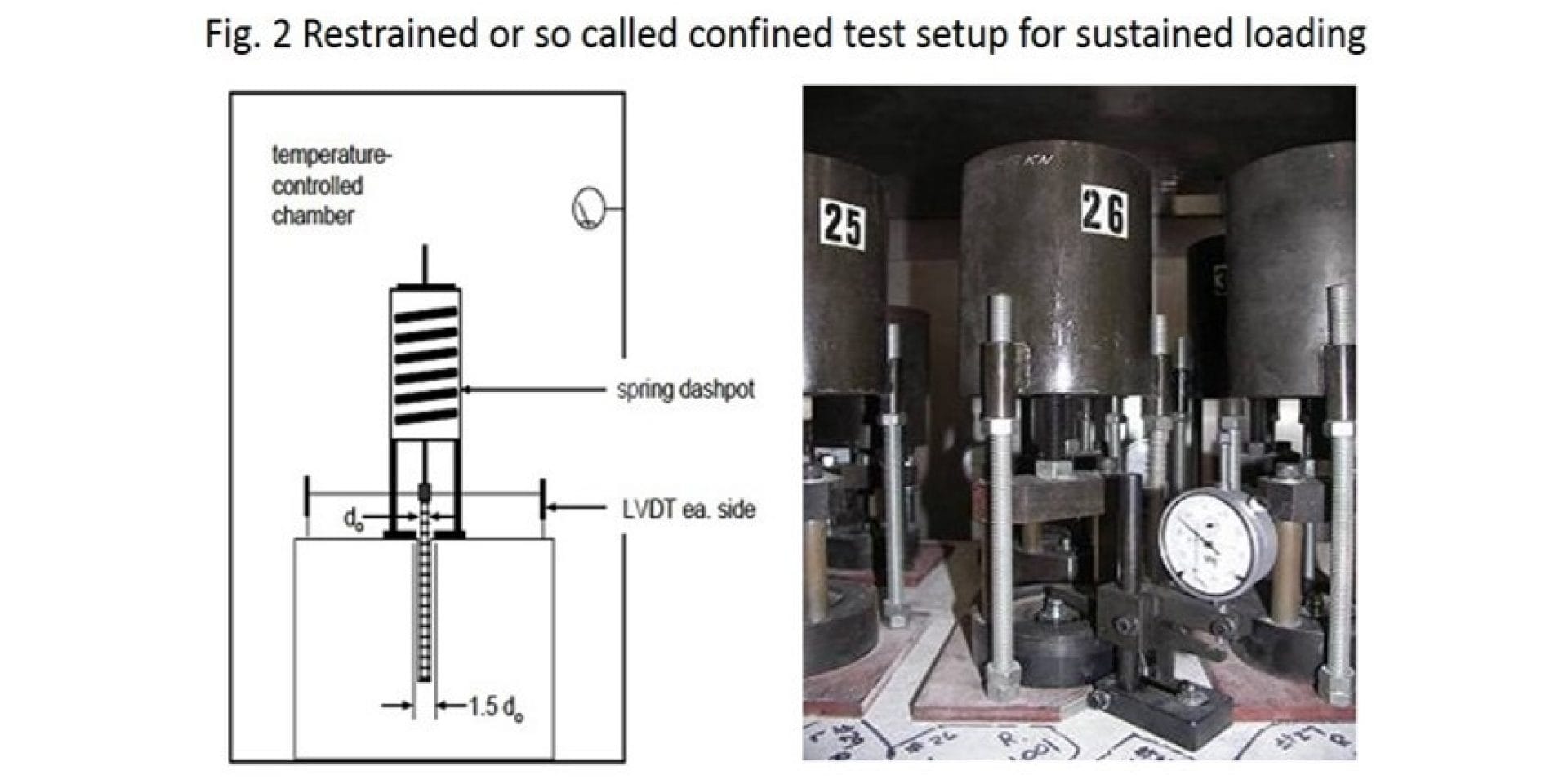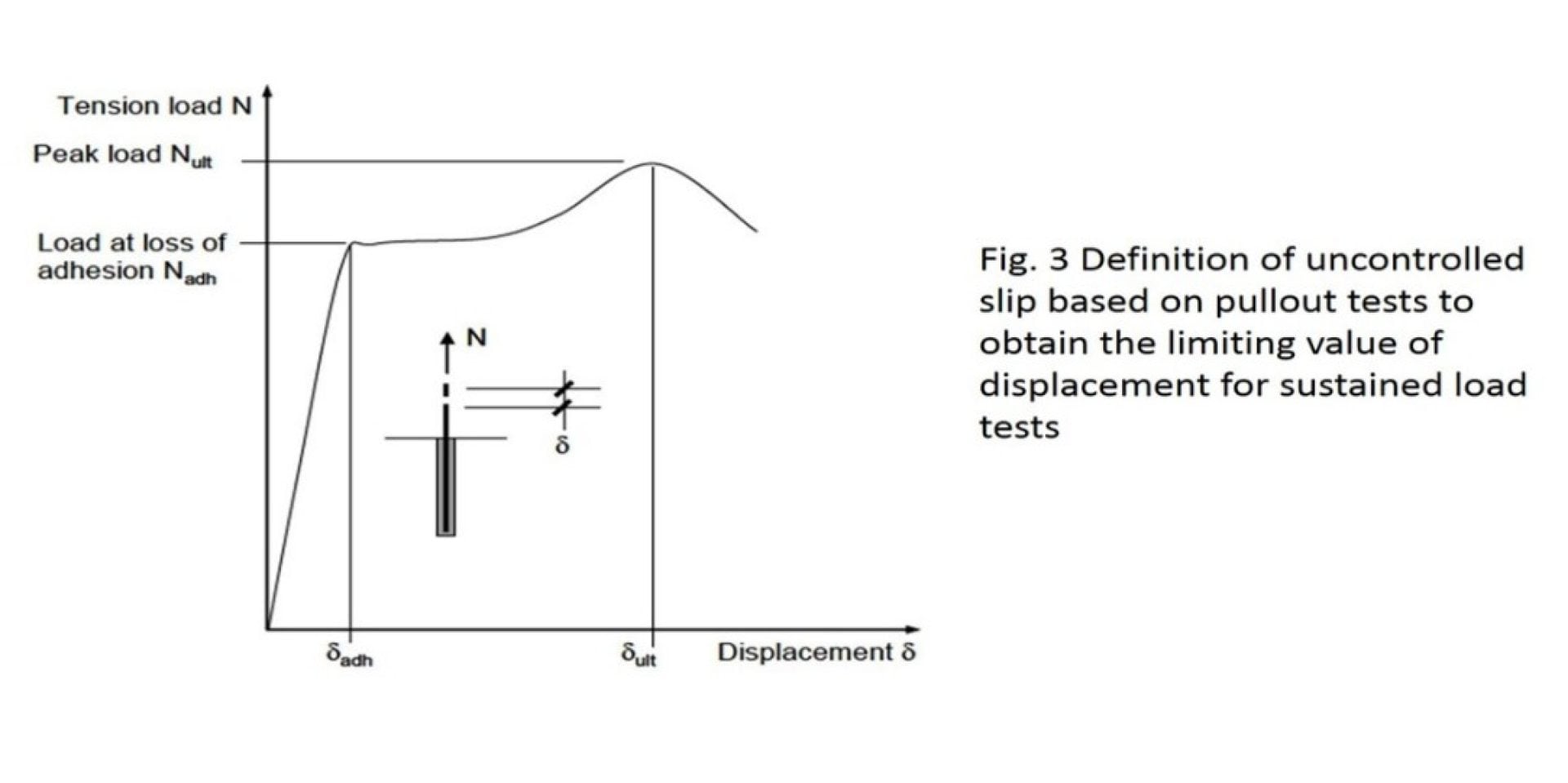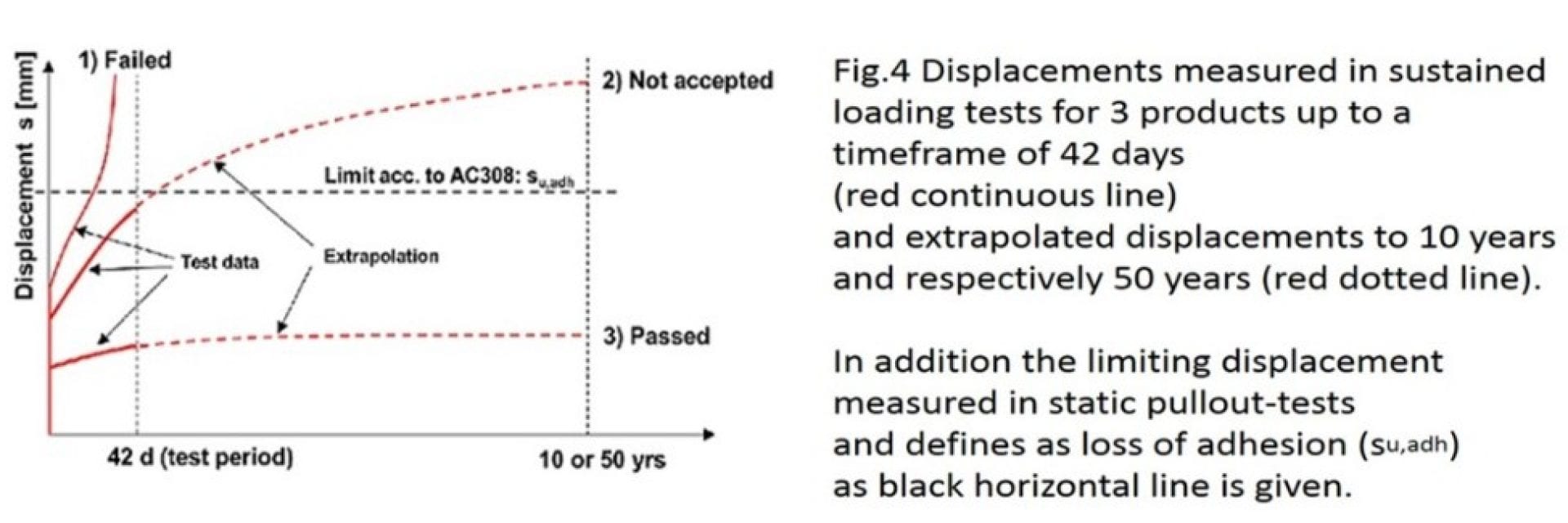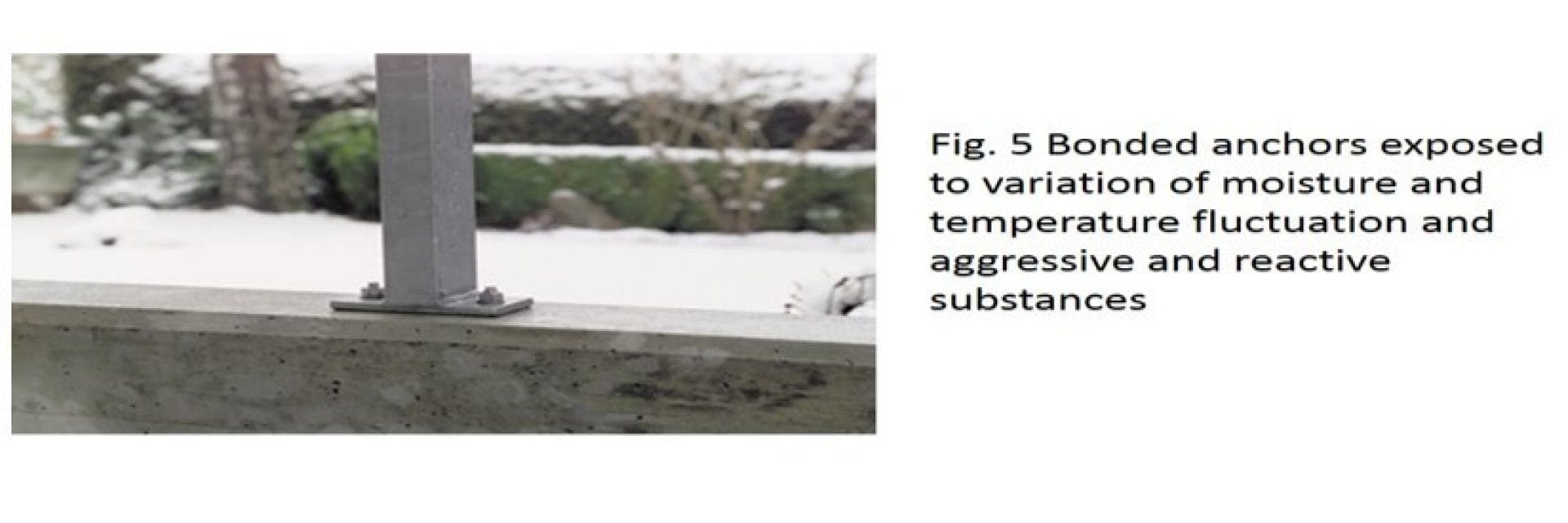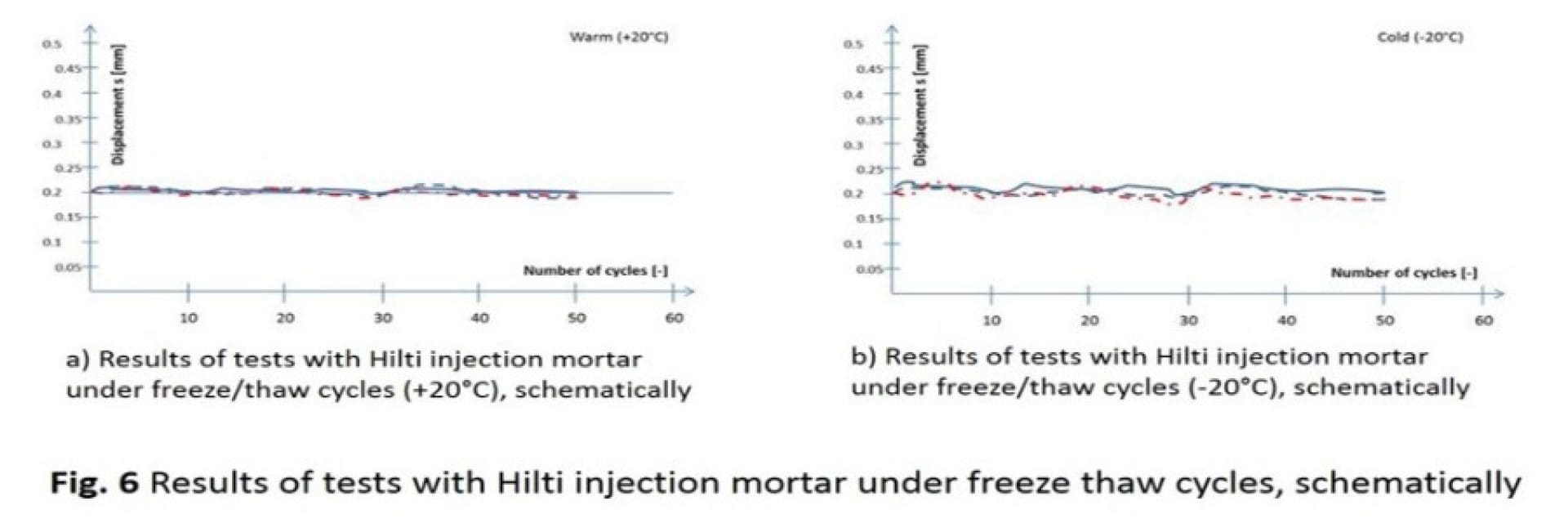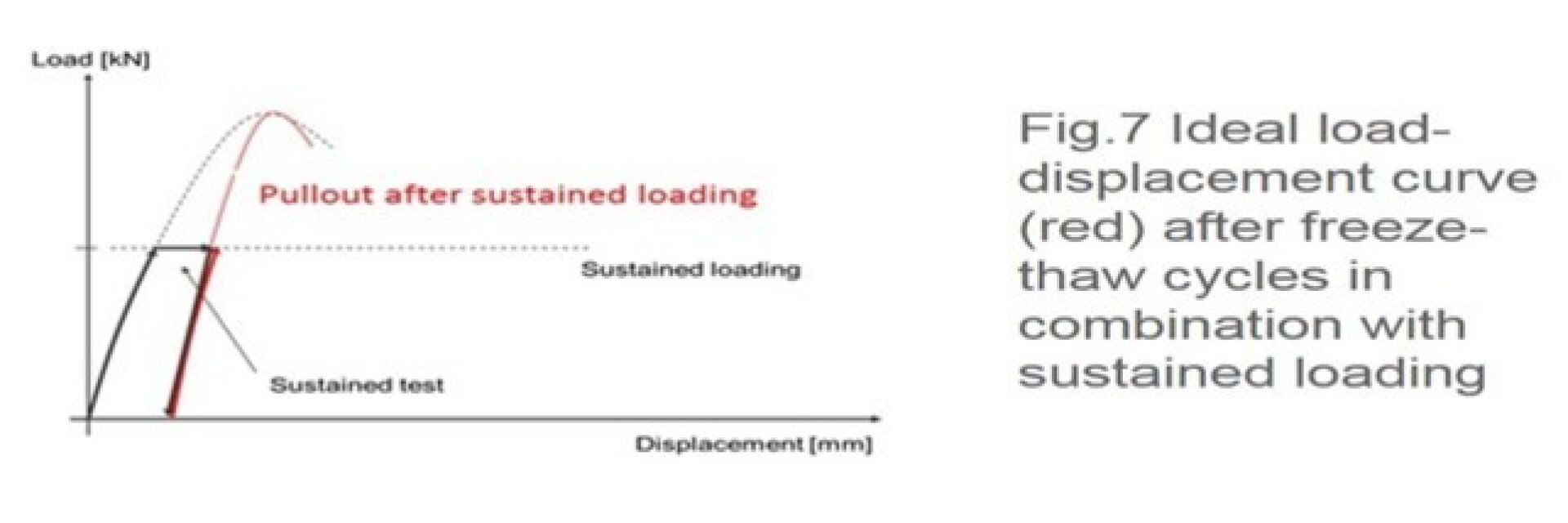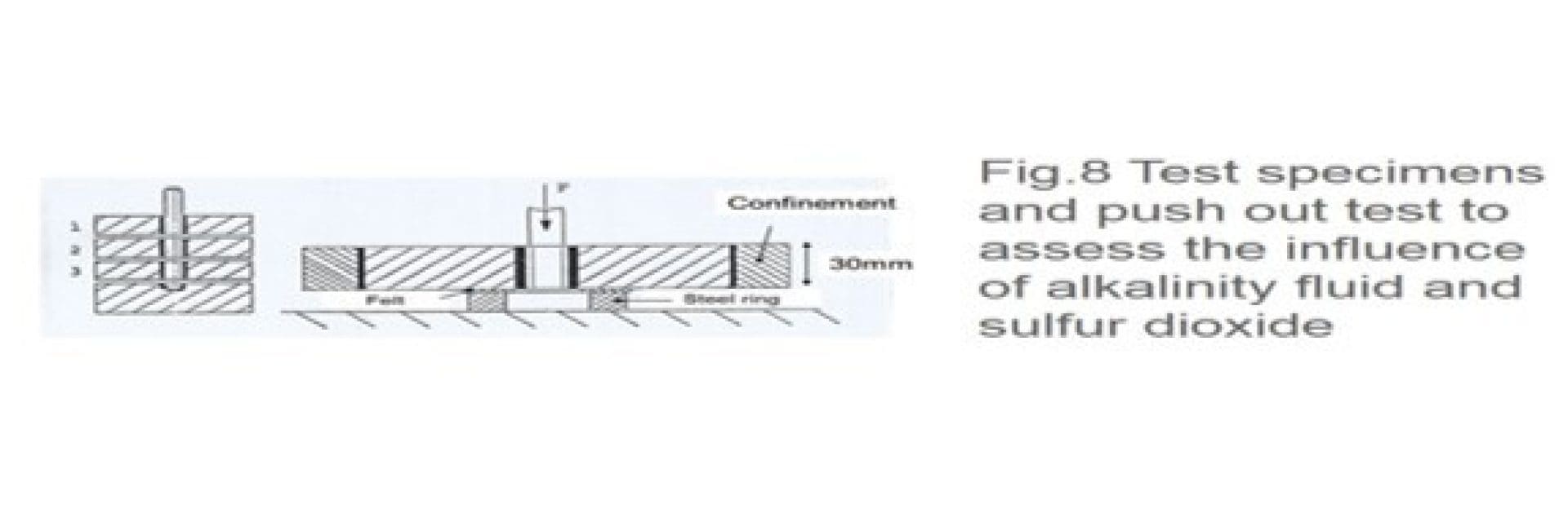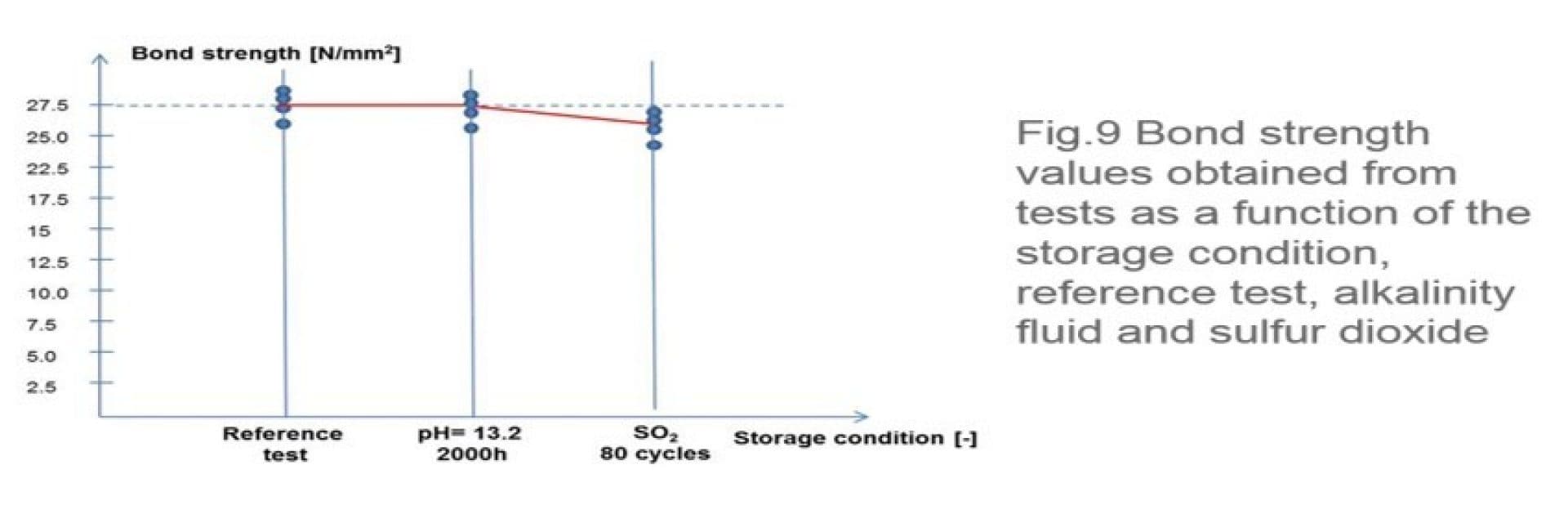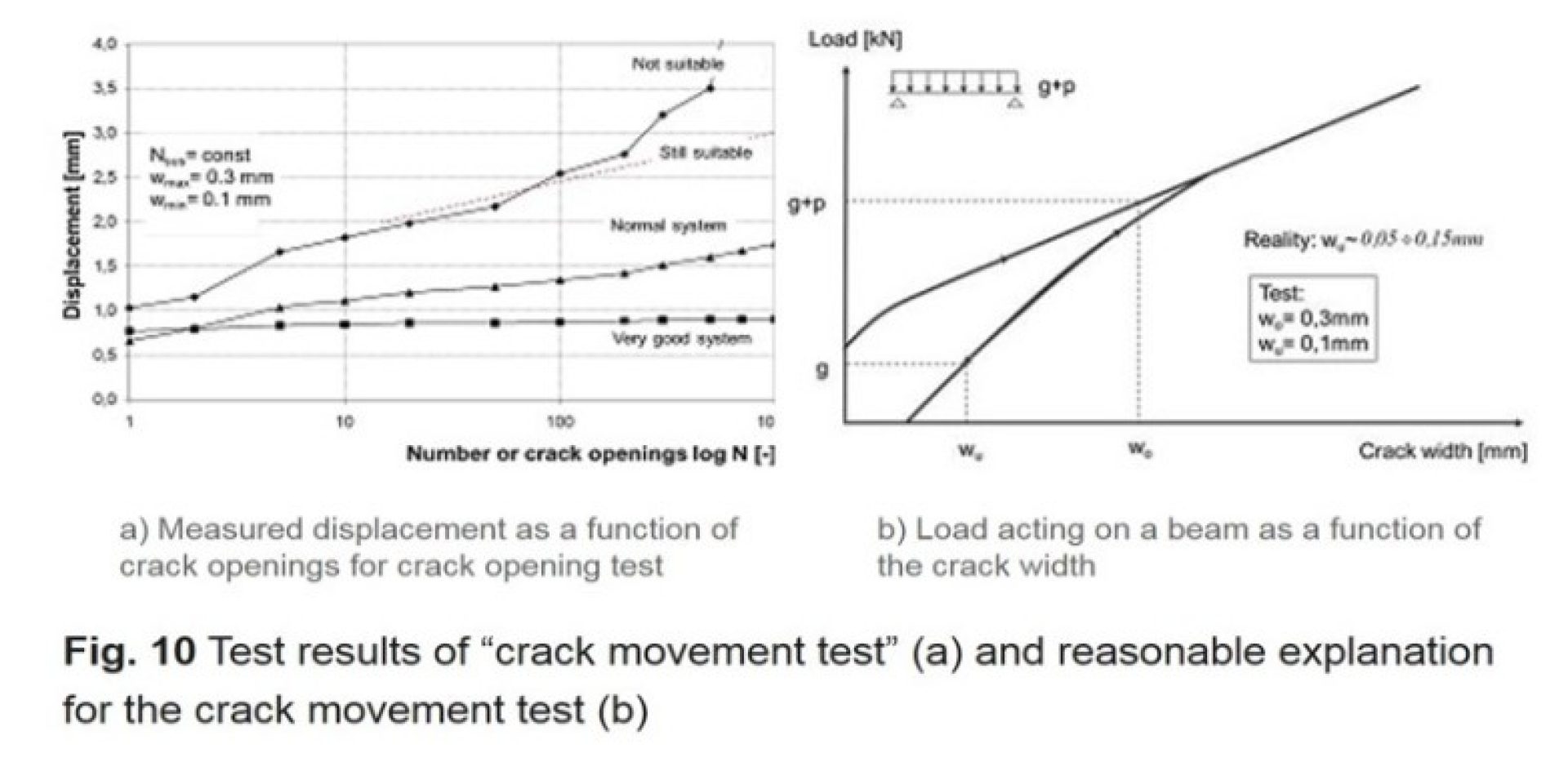1) Failed
Product 1 applied with a specific sustained loading failed already during the 42 days creep test (see continuous red line “1 Failed” in Fig. 4), by means of pullout failure indicated by an over-proportional increase of displacement. Obviously this bonded anchor system is not suitable for the applied load and temperature range. In that case the possibility of reducing the load may be checked while this reduction of the sustained load results in overall reduction of the basic characteristic bond strength values for the complete product as given in the approval.
Fig.4 shows additional two red continuous curves where the bonded anchor system did not fail by means of pull-out failure during the first 42 days. However, only one product is suitable.
2) Not accepted
In case of the red line “2) not accepted “the measured displacement within the 42 days increased but the bonded anchor was not pulled out. However the extrapolated displacement values (dotted red line) as described above shows significant lager values compared to the limiting displacement in case of” loss of adhesion” (black horizontal dotted line). Based on ETAG 001, part 5 and ACI 308 it is assumed that anchors, reaching this limiting displacement value of “loss of adhesion” during sustained loading will fail by means of pullout failure. This interpretation for the creep behavior is well established. However, tests indicate, that this behavior may be mortar type dependent.Based on the requirements stated in the approval this anchor system is also not suitable for sustained loading under the tested conditions.
The sentence is so important that it is worth to read again.
It is assumed that anchors, reaching this limiting displacement value of “loss of adhesion” during sustained loading will fail by means of pullout failure. This interpretation for the creep behavior is well established.
This sentence should be taken into account if prove loading is performed in combination with an assessment on site in case of an overhead application under sustained tension load. Even if prove loading was done and the results indicated that the required load can be applied on the anchor, no conclusions can be drawn concerning the sustained load behavior if only load values are considered.
3) Passed
The continuous red line “3) Passed” shows the measured and the extrapolated values (red dotted line) of an anchor system which fulfills the requirements concerning the displacement. This is reasonable due to the fact that extrapolated displacement is smaller compared to the measured displacement in case of loss of adhesion. Therefore injection mortars showing this behavior are verified for sustained loading under the tested boundary conditions. This behavior is covered in the basic characteristic bond strength values provided in the relevant approval document.
It should be noted that the verification is only valid in case of a proper installation of the system as given in the IFU. Evidence indicates that presence of entrained air bubbles and voids caused by adhesive run are particularly relevant to long term behavior and can aggravate the creep response of anchors subjected to sustained tension. Therefore measures are taken during product development by Hilti to prevent adhesive loss and air entrainment. This includes Hilti injection equipment such as piston plugs fitted to the end of the injection tube.

